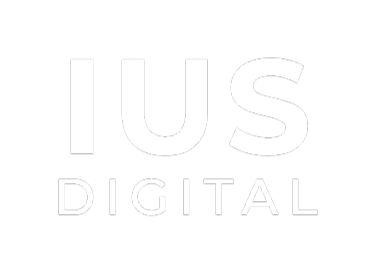Chatbots Are Your New Front Desk
AI chatbots have officially graduated from novelty to necessity. For yacht businesses and luxury hospitality brands, “nice-to-have” was a past story; now they're your new front desk. For a charter inquiry at 2 AM or a reservation request mid-cruise, today’s discerning customers expect instant, seamless, and personalized responses. But here’s the catch: fast doesn't mean robotic.
To drive real connection (and conversions), brands need to design chatbot experiences that feel human—intuitive, empathetic, and brand-aligned. In a digital world driven by purpose-driven branding and values-driven marketing, a robotic or impersonal chatbot can hurt more than help. Today’s consumers expect ethical behavior not just in your sourcing or ads—but in how your brand interacts with them.
Let’s explore IUS Digital Solutions ways to turn your AI chatbot into a concierge, not a call center script.
1. Think Brand Voice First, Not Bot Script
The biggest myth? That all chatbots have to sound like tech support.
Luxury and hospitality brands thrive on experience and tone. Your chatbot should echo that—from vocabulary to pace to how it handles “I’m just browsing.”
Yacht business? Think elegant, discreet, professional.
Boutique restaurant? Go with warm, playful, maybe a touch cheeky.
Multi-location hospitality brand? Keep it crisp, consistent, and courteous.
The type of authentic brand messaging fosters trust and builds brand affinity—especially among audiences who prioritize transparent marketing practices.
2. Make It Conversational, But Structured
You want natural flow, not awkward loops. A well-designed chatbot guides users like a good front desk manager: listens first, offers options, and solves fast.
Avoid long intros or generic greetings.
Use button-based choices to reduce typing friction.
Offer natural fallback responses like:
“I’m here to help—let me connect you with someone right away.”
For yacht brands especially, that quick switch from AI to human rep is a critical trust touchpoint.
3. Personalize the Journey with Contextual Awareness
Today’s best chatbots do more than answer FAQs—they anticipate.
When integrated with your yacht CRM or reservation system, your chatbot can:
Remember past charter preferences
Offer relevant availability or promos
Provide instant booking links synced with real-time data
This kind of seamless, tailored support is both convenient and signals prestige.
4. Design for Emotion, Not Just Efficiency
The hospitality and luxury space demands emotional connection, they cannot thrive on mere transactional chat. That means your chatbot needs emotional intelligence.
Include empathetic responses for frustration or confusion.
Allow polite detours like “Can I ask something else?”
Celebrate moments—“Happy anniversary on board! Want to upgrade your dinner experience?”
It’s small details like these that make guests feel cared for, even in a digital space.
5. Measure What Matters: Engagement, Not Just Speed
Most brands focus on chatbot speed or deflection rate. But that’s only part of the picture. If your goal is to strengthen brand affinity and drive bookings, track:
% of users who engage beyond the first question
% of chats that convert to qualified leads or bookings
Sentiment analysis (how helpful did users feel it was?)
Drop-off points—are people getting stuck or bailing early?
At IUS, we’ve seen luxury yacht brands increase inquiry-to-booking rates by up to 34% just by optimizing tone and response flow.
6. Know When to Hand Off to a Human
Even the best AI has limits—and that’s OK. The real magic? Designing handoff moments gracefully.
A luxury guest should never feel abandoned or stuck in a loop.
Build in rules like:
“If the question hasn’t been resolved in 3 turns → escalate.”
“High-value keywords (e.g. charter pricing, complaints) → alert human.”
A humanized chatbot isn’t about replacing people—it’s about making your team more responsive and more focused on the high-touch moments that matter.
7. Respect Privacy and Promote Transparency
A human-like chatbot must be trustworthy. That means being upfront about data usage, limitations, and handoffs.
Avoid vague data policies or sneaky lead-gen tactics.
Instead, embed transparent marketing practices directly in the flow:
“Your data helps us improve your experience. We don’t share it with third parties.”
This not only improves compliance but supports your responsible branding strategy.
Final Thoughts: Chatbots as an Extension of Purpose
When done right, chatbots are automation tools and they’re purpose-driven brand ambassadors. They carry your voice, values, and commitments to every user who stops by—whether at 10AM or midnight.
The future of impactful advertising and brand communication lies in this intersection of technology and responsibility. Businesses that master it gradually experience that they serve their customers better and they also serve their communities, planet, and principles better, too.
Need Help Designing a Human Chatbot?
At IUS Digital Solutions, we create AI-powered chatbot systems that align with your business goals and your brand’s conscience. From customer experience to values-driven engagement, our bots don’t just talk—they connect.
Get in touch with our team to build a chatbot that reflects your ethics, efficiency, and evolution.


